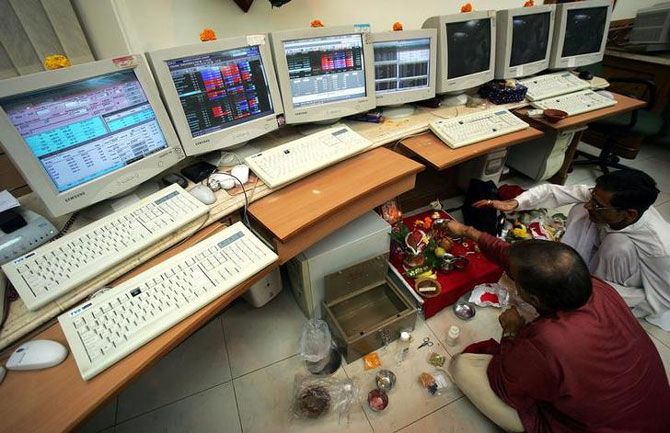'The domestic scenario is much better than earlier, demonstrated in the March quarter earnings.'
 Pankaj Pandey, who heads the research team of ICICI Securities, feels it is time for investors to look beyond index stocks for high returns.
Pankaj Pandey, who heads the research team of ICICI Securities, feels it is time for investors to look beyond index stocks for high returns.
In a conversation with Hamsini Karthik, he explains why niche IPOs indicate a shift in investor preference to newer businesses.
Edited excerpts:
The Sensex is touching a new high almost every day. Is this alarming?
After Brexit (UK's vote to leave the European Union), the market has stabilised sooner than expected.
The domestic scenario is much better than earlier, demonstrated in the March quarter earnings.
The monsoon also appears strong. Fear of deferral in the seventh pay commission has been put to rest.
The prospects of GST (the proposed national goods and services tax) getting passed in the Rajya Sabha seem high.
Hence, domestic cues outweigh global fears. However, central banks across the world will recalibrate their strategy and, therefore, we need to be cautious.
With a weaker European Union, global growth challenges have returned.
However, this means the easy monetary stance of central banks has to be maintained, which would result in decent inflows for the Indian markets. This will keep the market going.
 How long do you see these inflows being available?
How long do you see these inflows being available?
The access to easy money will continue. We have seen some stable FII (foreign institutional investor) inflow, while outflows have also not been as much as in other emerging markets (EMs).
Therefore, we have been commanding a good premium as against other EMs. In terms of growth, India is far better than other EMs.
Hence, I don’t see any major change in weightage for India in the next 12-15 months.
FY17 earnings are likely to grow at 12 per cent, while FY18's might grow at 18 per cent.
Therefore, though India is trading at a slight premium, there are no major competing geographies and the premium will be maintained.
However, Sensex returns might be in low double digit in the next 12 months.
We are halfway through 2016 and the Sensex has delivered less than seven per cent return.
The index has its own challenges because of the way it is constructed. Banks, information technology (IT), metals and oil & gas constitute around 40 per cent.
These sectors have been under stress for quite some time. But, the broader market, of mid- and small-caps, have fared far better, whether it is FMCG (fast moving consumer goods), consumer durables or even financials in this space.
Also, the consumption boom is yet to take off in India and it is at the cusp of growth. These sectors are increasingly seen as a flight to safety. Therefore, though these stocks trade at high valuations, it should not deter investors with a long-term horizon.
2016 so far has belonged to IPOs.
This increasing trend in initial public offerings (IPOs) suggests that confidence is back in the market.
Investors are willing to look at new businesses models and want to broad-base beyond the well-established large-cap names.
Investor appetite to look at new business models also indicates the broader markets might do better than the Sensex.
Does this also justify why some of the recent IPOs have commanded premium valuations?
To some extent. New businesses in niche segments provide investors with more choice and are capital-efficient.
Earlier, there were three or four capex-heavy sectors, such as telecom and power; these are past their prime in terms of capital expenditure.
We are now getting new sectors such as defence and railways where fresh capex will be deployed, and stocks in these segments will drive the broader indices in the next phase of growth.
Likewise, with passage of the GST Bill, the logistics sector could play out in a big way and this will, in turn, fuel manufacturing.
Similarly, traditional banks or IT names might not look too attractive in the coming days as much as a micro finance or urban financing company would.






